Purple is considered a mysterious and dominant color, which has been a symbol of royal honors for centuries. Nowadays, you can use it in your everyday life. One of the superior advantages of the modern age is planting purple perennials in your garden, regardless of whether they are dark or light shade.
With every flower, you will get that unique feeling of power, richness, and the landscape’s superiority. You can pick out any of the numerous violet-hued blooming beauties, which type, size, and shape will depend on your preferences and free space in your garden. Let’s see the options available.
Best Purple Perennial Flowers
1. Phlox (Phlox paniculata)
Phlox (fall phlox, summer phlox, garden phlox) is a classy purple perennial that can reach the height of 2 to 3 feet (61 – 91.5 cm) on average. The round, 24 inches (61 cm) wide flower clusters thrive on the full sun, and you can enjoy their beauty from mid-summer through fall.
The great thing is that its impressive, purple-blue flowers can last for a few weeks. You should also choose to grow this romantic plant if you want to attract hummingbirds, butterflies, and bumblebees to settle in your garden. Nowadays, you can find variations of this plant in white, lavender, and pink color.
2. Mistflower (Conoclinium coelestinum)
Mistflower is a North American native perennial with beautiful powder, puff-like purple flowers, which clusters appear from July to October. The average height of this showy plant is 1.5 to 3 feet (46 – 91 cm), and its scent will attract butterflies in your garden. Keep in mind that this elegant flower is considered a spreading weed in some regions in the US.
3. German bearded iris (Iris Germanica)
German bearded iris got its name after the Greek word for a rainbow. All of 300 species have elegant showy blooms you can quickly recognize by a unique combination of shades. However, the most beautiful is definitely the purple variation of this lovely, deer-resistant perennial.
You can expect it reaches 2 to 3 feet (61 – 91.5 cm) in height and spread from 10 to 24 inches (25.5 – 61 cm) wide. However, you can pick out a dwarf variety if you don’t have enough space in your garden. Since this plant prefers partial sun, the period of full blooming is in late spring and early summer.
4. Monkshood (Aconitum napellus)
Monkshood (queen of poisons, aconite, blue rocket, wolfsbane, leopard’s bane) is the plant of choice for you if you like purple perennials that bloom in late summer and autumn. Since monkshood prefers full sun, planting it in the shade will result in soft stems.
It can reach about 3 to 4 feet (0.9 – 1.2 m) in height and spread 1 to 2 feet (30.5 – 61 cm) wide. Keep in mind that all the plant is poisonous, which makes it deer-resistant. So, you should keep your kids and pets far away from this purple beauty.
5. Tatarian aster (Aster tataricus)
Tatarian aster is an elegant purple perennial native to Europe and Asia that includes about 180 species. Its name means the ‘star’ on the Ancient Greek since its flower head looks like stars. This late-blooming flower is quite tall and can reach an impressive 6 feet (1.8 m) in height.
On the top of the stem are clusters of small, purple blooms, which can spread 30 to 36 inches (76 – 91.5 m) wide. Many gardeners include this flower in their gardens because it is an excellent food for butterfly larvae, especially migrating monarchs. Plus, it attracts bees and hummingbirds, as well.
6. Blue false indigo (Baptisia australis)
Blue false indigo (wild blue indigo) is an incredible early-blooming perennial native to North America. You can spot this slow-growing plant along streams and at the wood borders where it grows wild. Unfortunately, the number of viable seeds is not very high because of parasites destroying them.
Plus, the bumblebees are the only insects heavy enough to open the blooms of this flower and pollinate them in spring. This plant grows about 3 feet (91.5 cm) in height with a bunch of lovely foliage and purple-blue flower spikes, which bloom time is not particularly long.
7. Russell blue lupine (Lupinus polyphyllus)
Russell blue lupine (garden lupin, large-leaved lupine, blue-pod lupine) is a perennial herbaceous that grows in western North America’s moist habitats. Its stout stems are about 5 feet (1.5 m) high with the palmate foliage with 9 to 17 leaflets approximately 1.2 to 6 inches (3 – 15 cm) long.
Bumblebees are the primary pollinators of these beautiful tall, purple spiked flowers long about 0.4 to 0.6 inches (1 – 1.5 cm). Nowadays, there are five varieties of this flower and a significant number of hybrids. British horticulturist George Russell spent twenty years in attempting to breed the perfect lupine.
8. Clustered bellflower (Campanula glomerata)
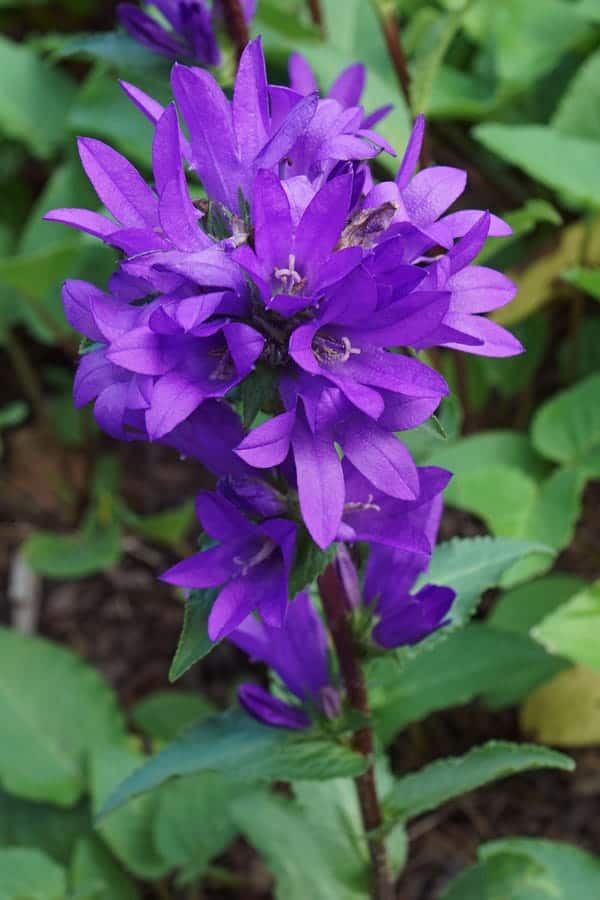
Clustered bellflower (Dane’s blood) is the county flower of Rutland county, Great Britain. This perennial herbaceous plant is 8 to 24 inches (20 – 61 cm) high, but some species can reach up to 35 inches (89 cm) in height.
You can see bell-shaped, dark purple flowers formed of 15 to 20 sessile, single, 0.8 to 1.2 inches (2 – 3 cm) long florets blooming from June to September. They are placed either in axils of upper leaves or terminal racemes.
9. Blazing star (Liatris spicata)
Blazing star (prairie gay feather) is an attractive purple herbaceous perennial native to sedge meadows and prairies of North America. Each plant has a stem with 5 or 6 flowers that attract butterflies and bees.
The 1 to 5 feet (30 cm – 1.5 m) high purple flower spikes remind me of feathers. Since the blooms don’t open at once, but in stages, you can enjoy its blooming for a long time, especially if you provide full sun for their thriving.
10. Salvia (Salvia nemorosa)
Salvia (Balkan clary, woodland sage) is a purple herbaceous perennial that flourishes throughout summer. It is an attractive, easy-to-grow flower native to Europe and Asia. Nowadays, almost 600 species of this plant are distributed throughout the Americas.
You can quickly recognize this flower thanks to its skinny blooming spikes placed on the top of 18 to 48 inches (46 cm – 1.2 m) long square stems. If you provide enough sun, your salvia will attract numerous pollinators in your garden.
11. Pasque flower (Pulsatilla vulgaris)
Pasque flower (Easter flower, windflower, meadow anemone, prairie crocus) blooms in early spring followed by tiny, ornamental fern-like leaves. After fading, this purple, deer-resistant perennial produces small poufy seeds.
The interesting fact is that the showy part of this bell-shaped flower doesn’t consist of petals but delicate sepals. This low-growing plant usually reaches 8 to 12 inches (20 – 31 cm) in height with dark violet, reddish-purple, or bluish-purple flowers on the top.
12. Lavender (Lavandula species)
Lavender is one of the most favorite purple flowers used for producing fragrant essential oils. It prefers thriving in the full sun and well-drained soil. You will enjoy spike-like fragrant blooms placed among silvery or grayish evergreen foliage.
This deer-resistant plant native to the Mediterranean will start flourishing from late spring and beautify your garden throughout summer. You can grow species with purple, lilac, violet, and blue blooms, depending on your preferences.
13. Catmint (Nepeta cataria)
Catmint is a perennial that thrives in hot, dry regions and attracts butterflies and birds in your garden. Rounded, fragrant silvery-blue leaves surround spikes of purple, nectar-rich flowers that bloom throughout the season.
This plant native to Europe and Asia is tall about 10 to 24 inches (25 – 61 cm), and it usually spreads 1 to 2 feet (30.5 – 61 cm) wide.
14. Millennium flowering onion (Allium Millennium)
Millennium flowering onion is a purple blooming plant resistant to rabbits, deer, and voles. Its orb-shaped clusters flourish for weeks during the summer and attract butterflies and bees.
Shiny, grass-like bunches of green leaves are ornamental and can reach 15 to 22 inches (38 – 56 cm) in length. Perennial Plant Association announced this flower the plant of the year in 2018.
15. Chrysanthemum
Chrysanthemums (chrysanths, mums) is a real fall-blooming beauty growing in mounds. This flower was cultivated in China in the 15th century BC and became popular in Japan from the 8th to 12th centuries. It came to the US after Colonel John Stevens brought it from England in 1798.
When you grow it in the full sun, it will reach approximately 1 to 3 feet (30.5 – 91 cm) in height and spread about 2 to 3 feet (61 – 91 cm) wide. Since this herbaceous perennial flower is colorful and attractive, you can use it as a part of autumn arrangements.
16. Spike speedwell (Veronica spicata)
Spike speedwell (bird’s eye, spiked speedwell, gypsy weed) is 1 to 3 feet (30.5 – 91 cm) high flowering perennial with 1 foot (30.5 cm) long spikes full of purple, blue, or pink blooms.
Luckily, this flower can adapt to various conditions and start blooming from June to August. You can see beautiful purple flowers remaining for weeks surrounded by beautiful green foliage.
17. Gladiolus (Gladiolus palustris)
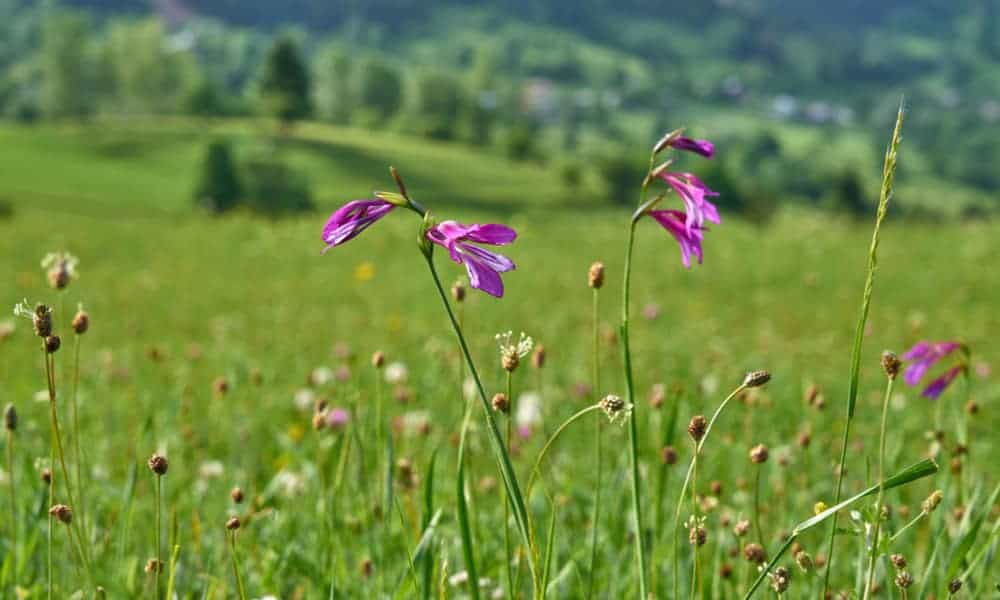
Gladiolus (sword lily, marsh gladiolus) is one of the classic herbaceous perennials that grow in marshes. Its glabrous stem can reach 2 to 5 feet (61 cm – 1,5 m) in height on average. Each plant contains 3 to 6 hermaphroditic flowers with a violet, 12 inches (30.5 cm) long perigonium.
Blooms are surrounded by sword-shaped, 1.5 to 3.5 inches (3.8 – 8.9 cm) long leaves. If you plant this impressive flower in your garden, you will attract bumblebees in the period of its flourishing from May through July.
18. Purple geranium (Geranium sanguineum)
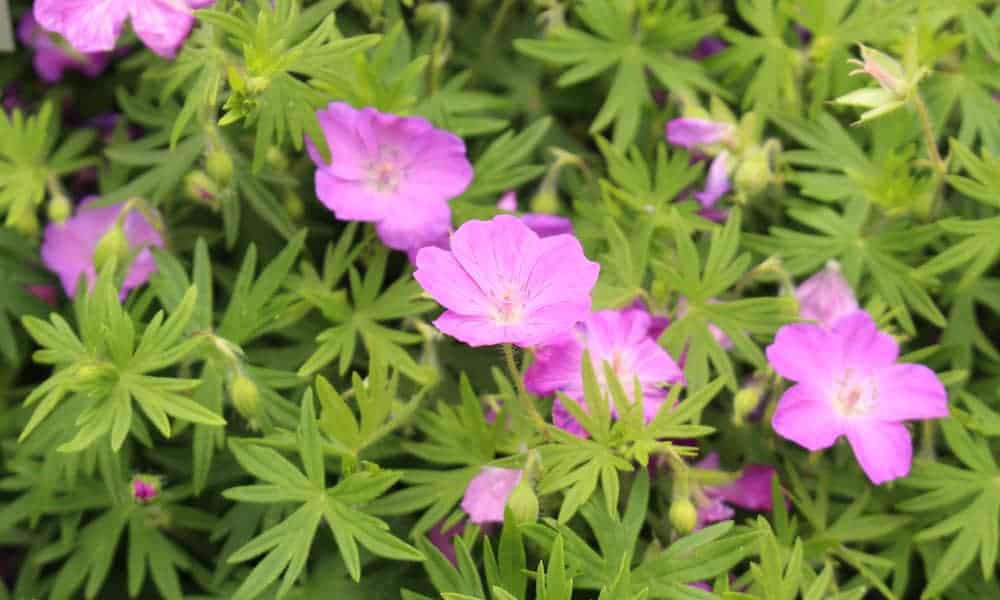
Purple geranium (bloody cranesbill, hardy geranium) is 1 to 1.5 feet (30.5 – 46 cm) high hardy flowering herbaceous perennial that can spread up to 1.5 feet (46 cm) wide. Its attractive petiolate, five-segment leaves surround flowers that have approximately 1 to 1.75 inches (2.5 – 4.5 cm) in diameter.
You can expect this hermaphrodite, magenta-purple flower to bloom from May to June. After that period, the plant will produce schizocarp fruit breaking up into five mericarps after ripening. Plus, you can enjoy its deeply-lobed red leaves in autumn.
19. Anise hyssop (Agastache foeniculum)
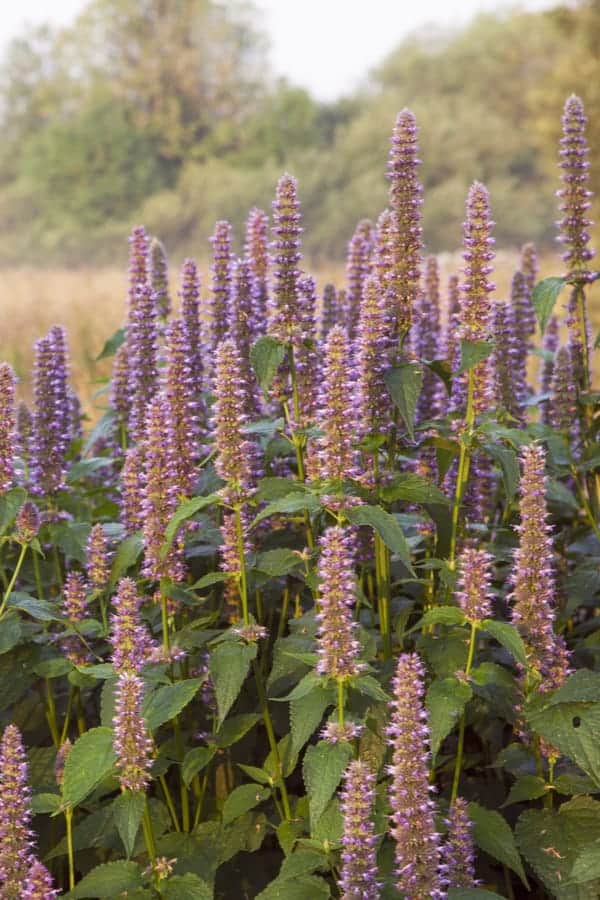
Anise hyssop (giant blue hyssop, giant lavender hyssop) is a perennial native to North America. This plant flourishing in prairies is tolerant of drought and deer but attracts honeybees, bumblebees, butterflies, hummingbirds.
The average height of this clump-like plant is 2 to 4 feet (61 cm – 1.2 m), and it can reach 1 foot (30.5 cm) in width. Its flowers appear in showy, so-called false whorls, which can branch on the top occasionally. I like oval, toothed shape leaves of this plant with white tint underneath.
20. Vervain (Verbena stricta)
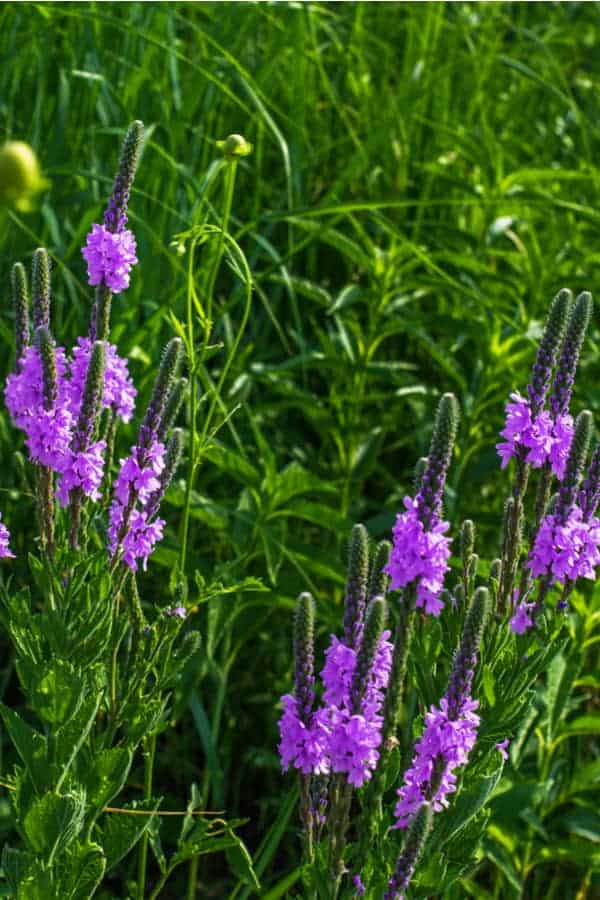
Vervain (hoary vervain, hoary verbena) is a North American native purple perennial. Its approximate height is from 4 to 5 feet (1.2 – 1.5 m). You should start your own flowers from seeds because you probably can’t find seedlings in the nursery trade.
If you live in a warmer region, you should find some sunny space in your garden for this plant, and you can enjoy its funnel-shaped purple blooms throughout mid-fall. Spikes are placed on the top of the four-sided, 4 to 5 feet (1.2 – 1.5 m) high stems between mounding foliage. This flower usually spreads about 18 to 36 inches (46 cm – 0.9 m) wide.
21. Purple-leaved spiderwort (Tradescantia pallida)
Purple-leaved spiderwort (purple queen, purpleheart, purple secretia) is an evergreen perennial with elongated, pointed foliage. Leaves are an unusual combination of glaucous green, purple, and red, and can spread 18 to 36 inches (46 – 91 cm) wide.
I like its tiny, sterile three-petaled purple blooms appearing all over the 1 to 2 feet (30.5 – 61 cm) high stems. Even though flowers last only a day, this plant can look spectacular if you let it tumble over the edges of a retaining wall or container.
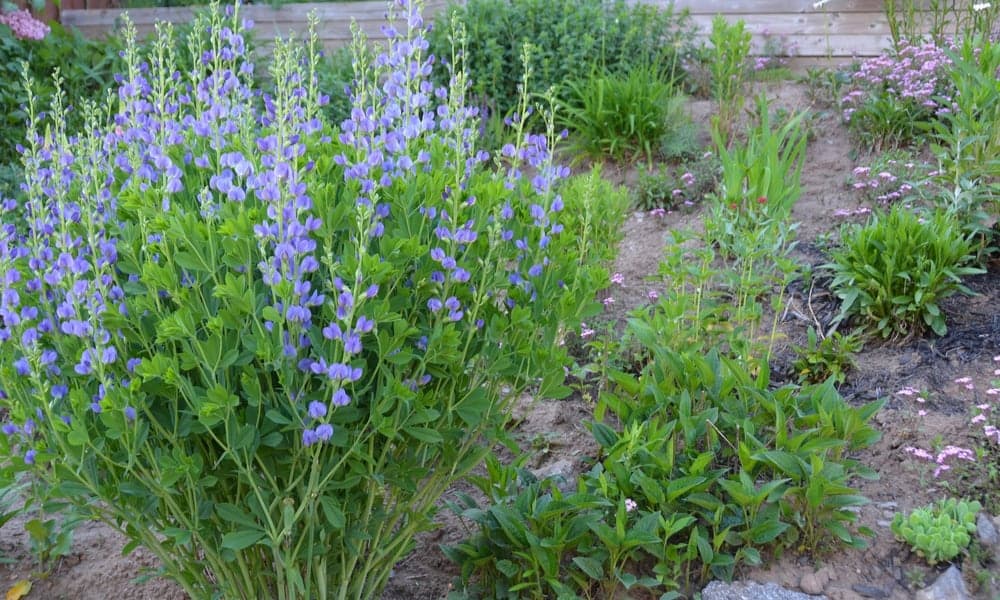
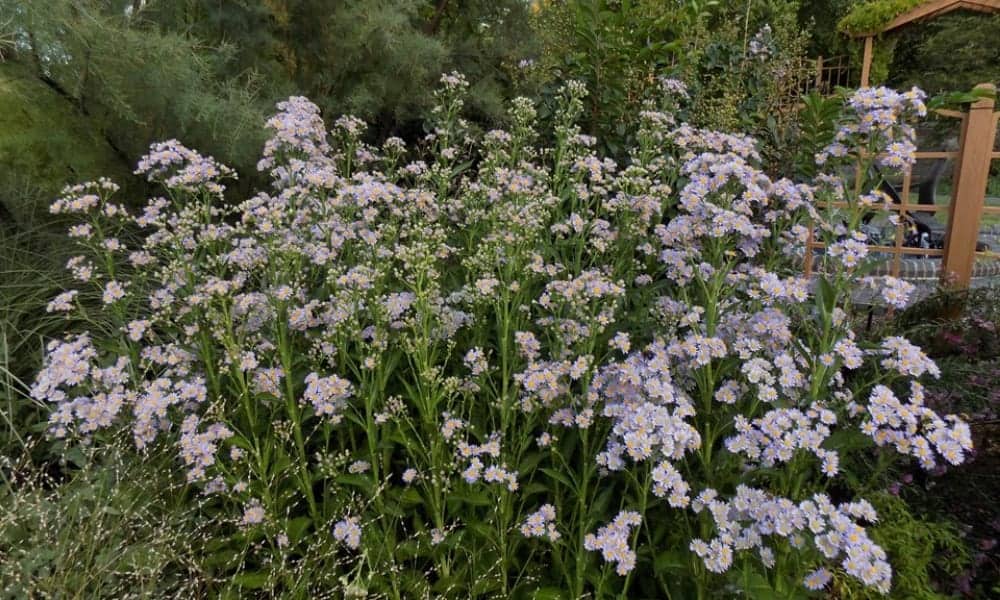
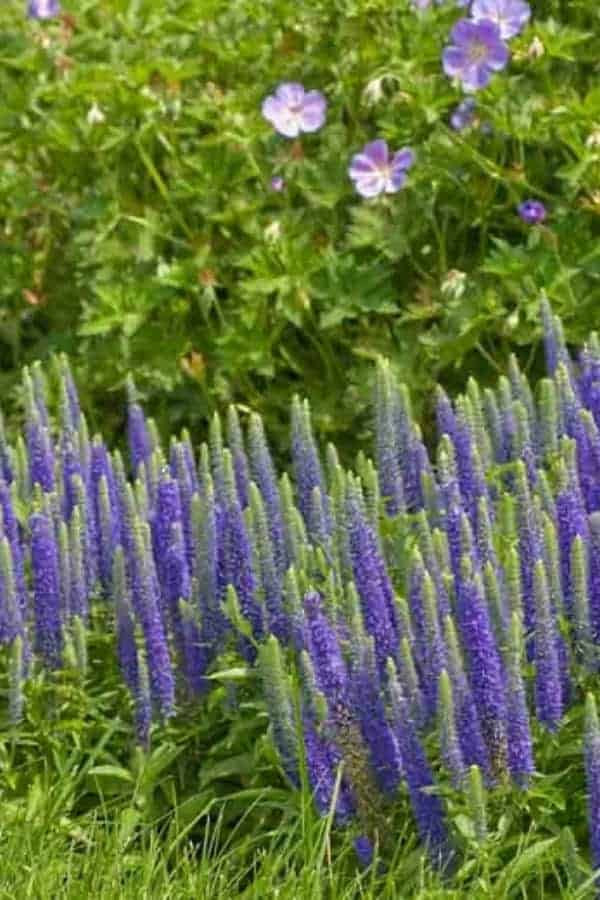
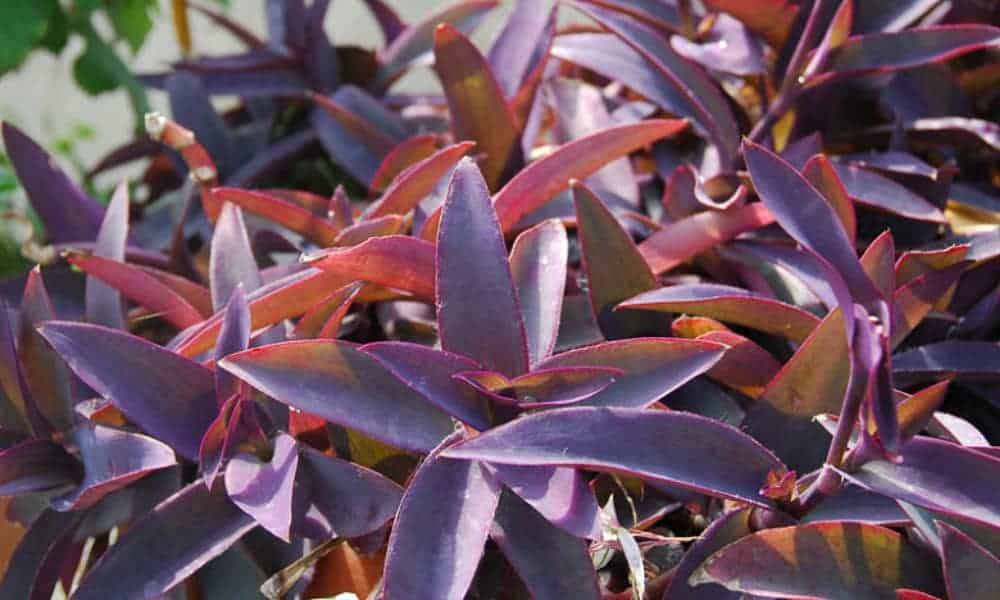
Leave a comment